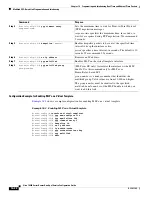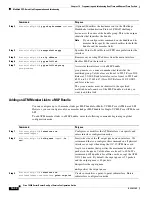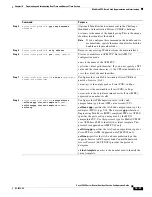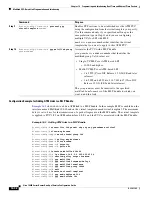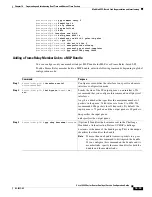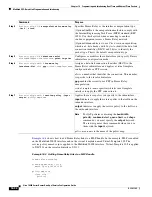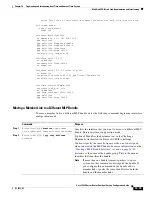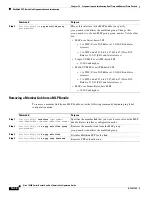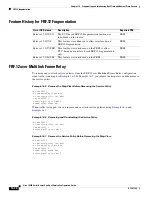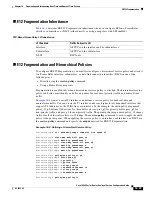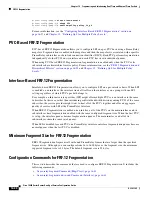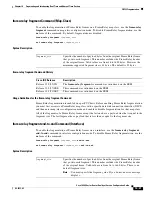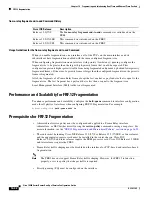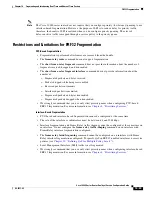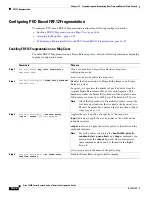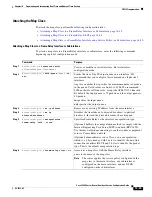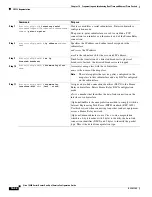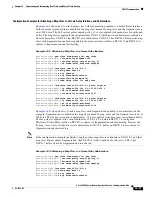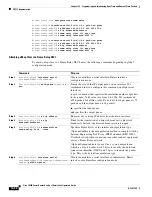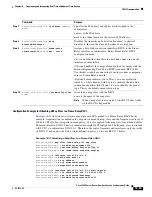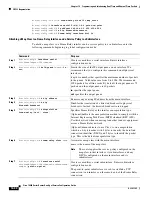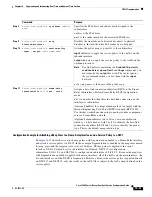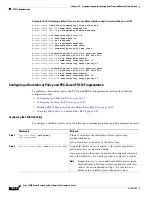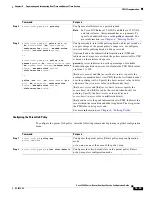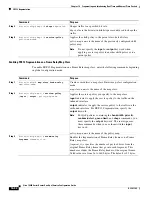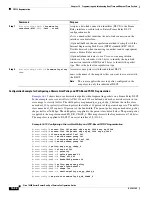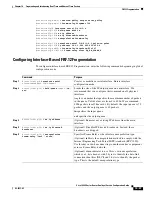
16-42
Cisco 10000 Series Router Quality of Service Configuration Guide
OL-7433-09
Chapter 16 Fragmenting and Interleaving Real-Time and Nonreal-Time Packets
FRF.12 Fragmentation
frame-relay fragment end-to-end Command History
Usage Guidelines for the frame-relay fragment end-to-end Command
When you enable fragmentation on an interface, all of the PVCs on the main interface and its
subinterfaces have fragmentation enabled with the same configured fragment size.
When configuring fragmentation on an interface with priority (low-latency) queuing, configure the
fragment size to be greater than the largest high-priority frame that would be expected. This
configuration prevents higher priority traffic from being fragmented and queued up behind lower priority
fragmented frames. If the size of a priority frame is larger than the configured fragment size, the priority
frame is fragmented.
All of the fragments of a Frame Relay frame except the last one have a payload size that is equal to the
fragment size. The last fragment has a payload that is less than or equal to the fragment size.
Local Management Interface (LMI) traffic is not fragmented.
Performance and Scalability for FRF.12 Fragmentation
To enhance performance and scalability, configure the
hold-queue
command in interface configuration
mode for all physical interfaces when configuring FRF.12 Fragmentation. For example:
Router(config-if)#
hold-queue 4096 in
Prerequisites for FRF.12 Fragmentation
•
A hierarchical service policy must be configured and applied to a Frame Relay interface,
subinterface, or DLCI either directly using the
service-policy
command or using a map class. For
more information, see the
“FRF.12 Fragmentation and Hierarchical Policies” section on page 16-39
.
•
The router must be running Cisco IOS Release 12.0(27)S or Release 12.2(27)SBB, or later releases,
and the appropriate processor card must be installed in the router chassis. Cisco IOS
Release 12.0(27)S and later releases require the PRE1 processor card. Cisco IOS Release 12.2SBB
and later releases require the PRE2.
•
Frame Relay traffic shaping must be disabled on the interface for PVC-based and interface-based
fragmentation.
Note
The PRE2 does not support Frame Relay traffic shaping. However, for FRF.12 to function
properly, a service policy that shapes traffic is required.
•
Priority queuing (PQ) must be configured on the interface.
Cisco IOS Release
Description
Release 12.0(27)S
The
frame-relay fragment end-to-end
command was introduced on the
PRE1.
Release 12.2(27)SBB
This command was introduced on the PRE2.
Release 12.2(31)SB2
This command was introduced on the PRE3.

